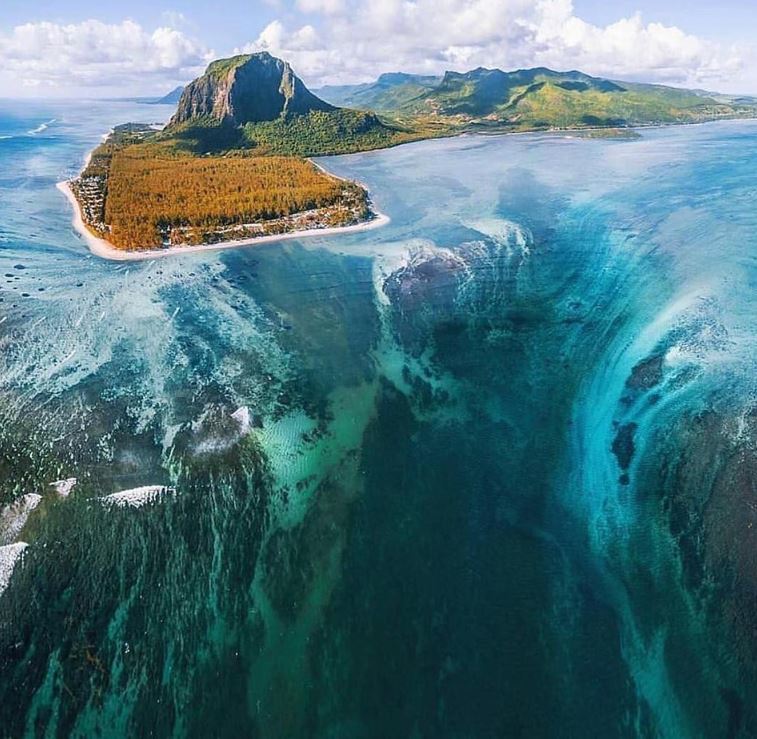The tallest underwater waterfall, known as the Denmark Strait cataract, is located beneath the Denmark Strait between Greenland and Iceland
This natural wonder is formed as cold water from the Greenland Sea plunges into the Irminger Sea, creating a breathtaking descent that extends for over 3 kilometers. To put its scale into perspective, this underwater cascade is over three times the height of Venezuela's iconic Angel Falls.

The Denmark Strait cataract is also remarkably expansive, spanning a width of 160 kilometers (100 miles).
Its flow rate is astonishing, with approximately 5 million cubic meters (175 million cubic feet) of water plummeting every second, which is equivalent to nearly 2,000 times the flow rate of Niagara Falls at its peak.
You might wonder how an underwater waterfall can exist and how water can "fall" underwater.
The phenomenon can be explained by differences in water temperature. Cold water is denser than warm water.
When the frigid, southward-flowing water from the Nordic Seas meets the comparatively warmer water of the Irminger Sea, it sinks.

The colder, denser water is forced beneath the warmer water, resulting in a dramatic drop in the seafloor, thus creating this impressive underwater waterfall.
Professor Anna Sanchez-Vidal is currently spearheading an expedition to explore the Denmark Strait Cataract, a unique underwater phenomenon. She highlights that cataracts, like the Denmark Strait Cataract, are among the natural wonders affected by the consequences of global warming.
With glaciers melting due to rising temperatures, a significant amount of freshwater enters the oceans.
This influx disrupts the ocean currents responsible for transporting vital nutrients and chemicals between the surface waters and the deeper regions of the ocean.
These intricate current systems are crucial for sustaining marine life and fostering a remarkable marine environment.
Prof Sanchez-Vidal said: “A good example is on the Catalan coast, where the decrease in the number of tramontane days in winter in the Gulf of Lion and north of the Catalan coast is causing a weakening of this oceanographic process, which is decisive in regulating the climate and has a great impact on deep ecosystems.”






